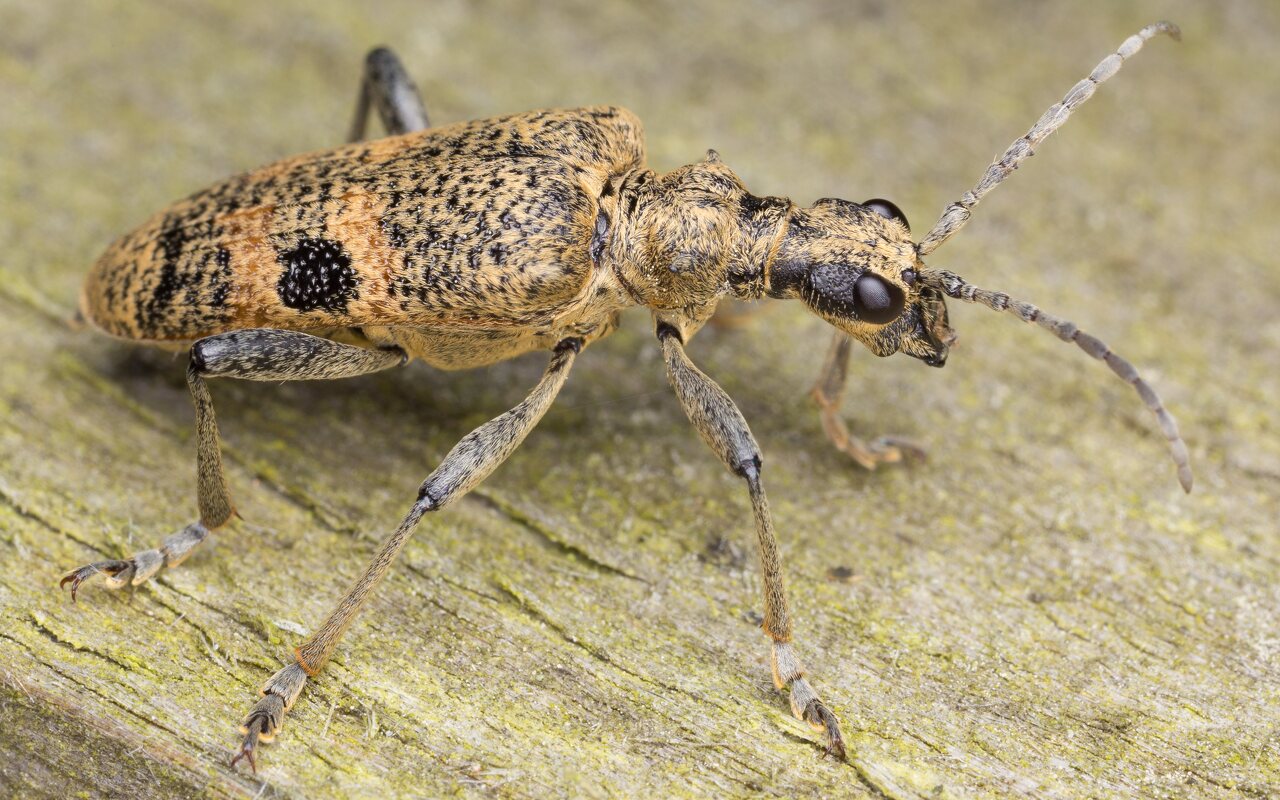
Rhagium mordax · dygusis ragijus
- black-spotted longhorn beetle
- Schwarzfleckiger Zangenbock
- dygusis ragijus
- lapkoku ligzdu koksngrauzis
- rębacz szary
ukbeetles.co.uk/rhagium-mordax This species is generally distributed and for most part very common throughout Europe except for the far north of Fennoscandia, to the south it is present along the entire northern Mediterranean and Black sea borders and to the east extends through Asia Minor and Russia to Mongolia and eastern Siberia.
The females will oviposit on a range of dying and decaying deciduous and broadleaf trees e.g. oak, chestnut, alder, birch, beech, ash, lime, hornbeam, pine and spruce among many others, standing as well as fallen timer and old stumps are chosen and eggs are laid among crevices and cracks in the bark, usually in areas where the wood has started to decay and become soft. Larvae develop through the summer forming shallow galleries under the bark and rarely entering the xylem, development usually takes two years though in unfavourable condition can be extended to three years, they are said to be very active and will attempt to bite if handled. Pupation occurs beneath the bark in August or September and for this the larva prepares an intricate oval cell of wood fibres around a depression in the xylem, this stage is brief, and adults emerge in the autumn, they soon become hardened and pigmented but they remain in the cell to overwinter and emerge the following spring.
Adults vary greatly in size, from 13 to 22mm, and the width of the transverse pale elytral bands can vary to the extent that they merge, moreover the antennae are rather short for members of the family but the species is usually readily identified by overall appearance.
Kūnas 14-19 mm ilgio, juodas, apaugęs pilkšvais ir žalsvai gelsvais plaukeliais. Antsparniuose yra du gelsvi raiščiai. Vabalai skraido balandžio – rugsėjo mėn. Randami pamiškėse, miško aikštelėse, kirtavietėse ant žolinių ir sumedėjusių augalų žiedų, rastų, kelmų. Vystymosi ciklas trunka vienerius metus. Lietuvoje dažna rūšis.
‥
0 comments
Add a comment